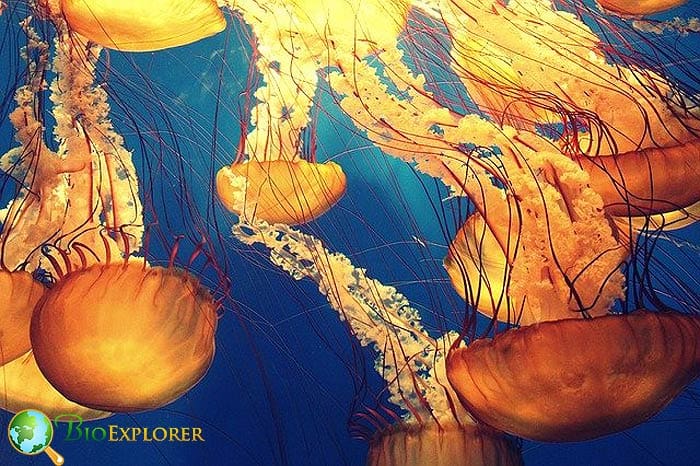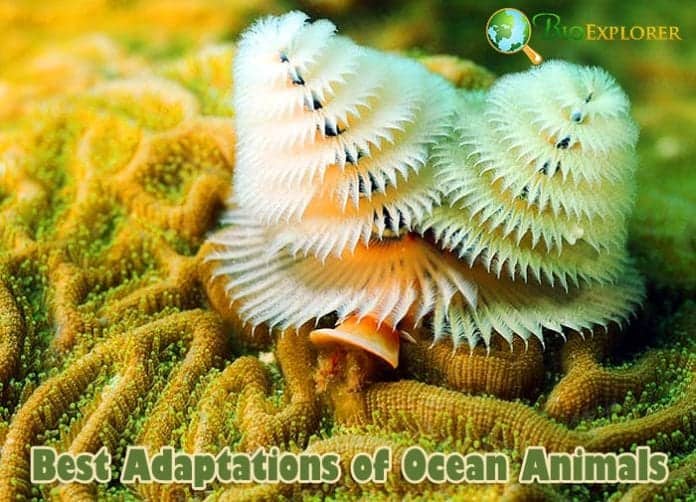- Dapatkan link
- X
- Aplikasi Lainnya
- Dapatkan link
- X
- Aplikasi Lainnya
The son of a Navy Pilot Charlie lived in all the great beach towns all over the country. They love the warm tropical and sub-tropical waters out in the open Atlantic and Pacific oceans often feeding in groups on schools of small fish.

Unit 10 Plant And Animal Adaptations Goal I
Some More Examples of Physical Adaptation Did you know Meerkats have dark circles around their eyes which act like sunglasses helping them see even when the sun is shining very brightly.

Tropical ocean animals adaptations. Great Smoky Mountains Edition August 7 2018 1146 AM. Tropical Temperate Boreal and Plantation. Portuguese man-of-wars have air bladders that allow them to float on or near the surface of the ocean.
Many beautiful and fragile animals have adapted to the warm waters of coral reefs. Adaptations for Buoyancy Many species of fish have internal swim bladders filled with gas that keep them neutrally buoyant When a fish changes depth it adjusts the gas pressure in its swim bladder to compensate for pressure change gets smaller when swim deeper. Explore four unique adaptations and compare how different animals use adaptations to survive.
Structural Adaptations These are special attributes that involve some parts of an organisms body such as skin colour and shape. The green sea turtles shell protects it from predators. Behavioural things that animals do that make life a lot easier in their habitat such as.
That is why in 2001 Team ECCO was started as a learning program to reach and teach students of all ages about the ocean. In most aquatic animals swimming is a must. Most summers of his childhood were spent with his parents and six.
Among them are webbed feet sharp claws whiskers sharp teeth large beaks wings and hooves. Thresher sharks reach a length of 13 to 20 feet with a tailfin nearly as long as the rest of their body. Many animals such as cockles are adapted to live in these conditions.
In tropical waters organisms have appendages to keep them afloat. Hummingbirds have long skinny beaks that help them drink nectar deep inside of flowers Pelicans have large pouch-like beaks to scoop up fish. For example sharks have streamlined bodies for fast swimming and noses with special sensors that let them sense electric fields put out by other fish and animals.
Adaptations of this sort allow the jaguar to find food not only on the ground but in the plentiful rivers and streams of the amazon in the form of fish turtles and caiman. Examples include the blubber of a whale the beak of a woodpecker baleen of a humpback whale. Fish amphibians reptiles birds and mammals.
Tropical ocean animals adaptations. The intertidal zone the pelagic zone and the abyss. Adaptations of Plants in evironments.
The ocean has three broad habitats. Animals have evolved their adaptations. A good example of an animal adaptation is the way in which an animal moves from one place to another.
There are so many amazing adaptations to see at the Aquarium. Living in Western North Carolina the opportunity to explore marine life from different parts of the ocean is a scarcity. T he tropical oceans of the world are home to fish mammals and birds as well as a myriad of invertebrates.
Fish and sharks have gills to breathe underwater crabs have claws to grab food and urchins have spines to protect themselves. Location The Eastern Tropical Pacific Ocean a discrete biogeographic region from the Gulf of California to northern Peru. Temperatures vary dramatically between the surface and the ocean floor.
One of the major behavioral adaptations of marine mammals is their ability to swim and dive. To aid swimming many animals have adapted and evolved with webbed feet. Sharks are very good at finding food.
For example many types of seaweed attach firmly to rocks so they are not swept away by waves. Structural parts of animals inner and outer bodies that have helped them adapt to their environment for example a leopards long tail to help it balance when climbing. Tropical savannas present plants with dry soil periodic fires and threats from herbivores.
In most aquatic animals swimming is a must. These adaptations help the organisms to survive in their natural habitat. Each one helps the animal survive in its habitat.
All animals in the ocean release carbon dioxide into the water as waste which is then used by plants to produce energy. Something Fishy Going On. Many animals have developed specific parts of the body adapted to survival in a certain environment.
The amazon rainforest is the worlds largest and richest tropical rainforest. Among them are webbed feet sharp claws whiskers sharp teeth large beaks wings and hooves. Pinnipedsswim by paddling their flippers while sirenians and cetaceans move their tails or flukes up and.
Adaptations can be lots of different things but usually fall into one of the following groups. Seed types drop seeds for animals to eat wind to carry and water to carry for reproduction of plant movement of plants to go to sunlight phototropism chemicals used to define territory they grown in plants grown on one another. Coastal plants need special adaptations to survive.
They have strong shells that protect them from wave action drying out and the prying beaks of predators. Charlie Knight has had a long-term relationship with the ocean surf and tiki culture. Each group of animals has its own general adaptations.
Animals adapt to their environments to help them survive. Many animals have developed specific parts of the body adapted to survival in a certain environment. Ocean animals have unique adaptations depending on what ocean habitat they live in.
Because the reefs offer natural protection to many of. Have students make predictions about ocean habitats. Water depth temperature and the presence or absence of light are some of the conditions that differ in these habitats.
Animals who live in the oceans have unique adaptations that allow them to move through water and defend themselves from marine predators. Geckos have developed large flattened toe pads that have sticky scales on their undersides. To aid swimming many animals have adapted and evolved with webbed feet.
He began carving wood in the 70s and has been a full time wood sculptor since 1982. These communal organisms use their air bladders like sails allowing wind to move them through the water. Difficult to track marine animals visually over significant distances.
They use their long upper tail fin to stun small fish. Some of these adaptations make it easy to identify which group an animal belongs to.
1 9 Adaptation Of Marine Organisms To Live In The Sea Aquatic Life Lab

Caribbean Sea Marine Biome Animal Biome Caribbean Ecosystems En Marine Ocean Plants Science Sea Glogster Edu Interactive Multimedia Posters

Adaptations For Survival In The Sea

15 Interesting Ocean Animal Adaptations Biology Explorer

15 Interesting Ocean Animal Adaptations Biology Explorer

15 Interesting Ocean Animal Adaptations Biology Explorer

15 Interesting Ocean Animal Adaptations Biology Explorer

World Biomes Follow Along With Your Notebook To

Komentar
Posting Komentar